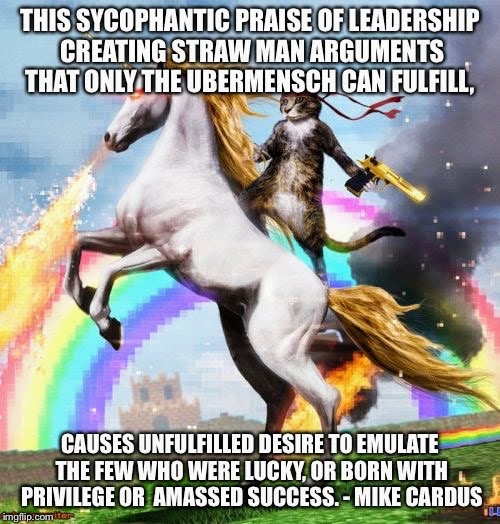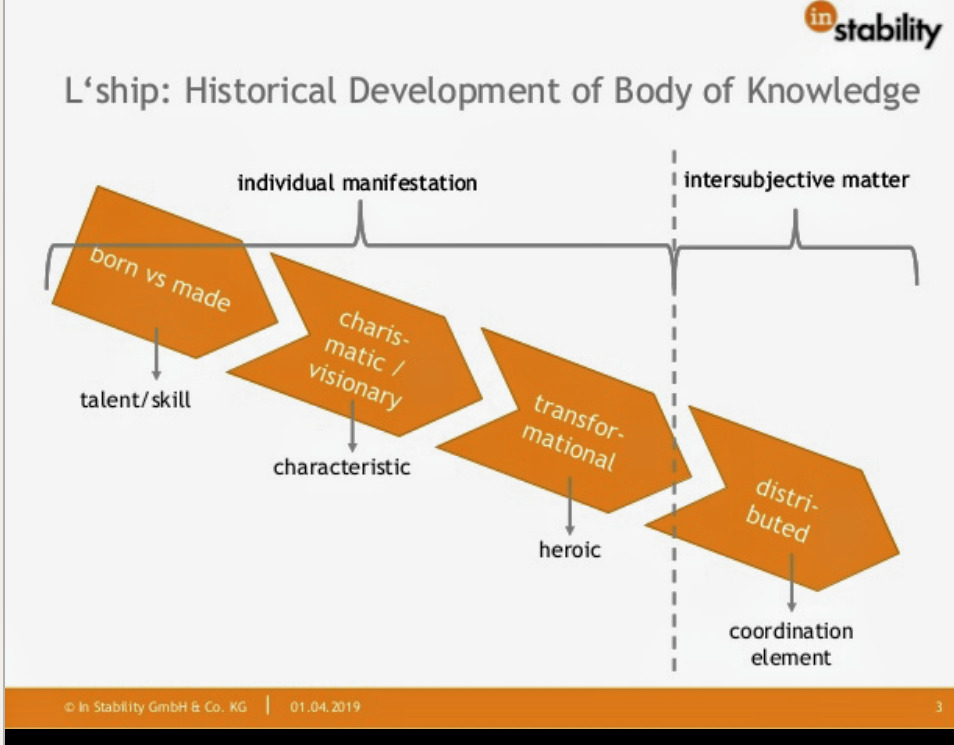Leadership is contextual interaction with others to make collective progress. Distributed leadership shows that we can create a robust organization and navigate change and chaos together.
Our reference to what effective leadership looks like is changing—the relevance of what, how, and IF leadership matters is a conversation worth having.
I’ve been critical of the belief or felt the need that a single “great man” is a leader. I’ve been critical of the feeling that we need some paternalistic organization with an authoritarian leader to tell us what to do. And this tension between leadership and autonomy is a paradox in American life. We want to feel that a leader is there, and we don’t want someone telling us what to do, BUT we want someone else to tell others what to do.

We’ve seen through leadership research that leadership focus has moved from:
Individual Focus – a single leader exercising command and transformation.
- Born vs. Made = leadership as talent and skill
- Charasmatic / Visionary = leadership as a characteristic
- Transformational = leadership as heroic
Intersubjective (shared by many minds) – leadership distributed within and amongst teams, areas, and people.
- Distributed = leadership as coordination element

Does Leadership Matter?
In some contexts, yes, and in some, no.
Leadership is contextual interaction, and the context matters. When leadership acts in ignorance of the context, we feel manipulated—that behavior repels-trust from the organization and the areas where leadership exists.
Areas of Leadership that (generally) matter
Leader as a catalyst for action or a decision
- A leader is a person who makes a decision that the majority of the team wants or quietly agrees needs to happen — and the team cannot or will not take the social pressure of making the decision.
Leaders placed into management roles, and the informal leadership that emerges when needed
- When someone in a leadership role has the sufficient capacity “big enough,” their story of the work and world is different.
- This difference can be useful to help other people learn how to solve problems and see decisions differently.
Leaders seeing market viability and crafting a shared vision
- How the person and team in the leadership role(s) know the organization and articulate or reflect its vision and market viability leads to other smart people wanting to join or leave that organization.
Leadership is becoming distributed; the rise of the bottom, side, and multi-angle feedback increases. The ability to instantly ask and gather wide-ranging thoughts, ideas and experiences has changed power and control. The desire(?) or paradigm that a single person is a leader has shown itself as a truly distributed piece. Many people contribute to actions and decisions and have always been a part of the leadership actions.
Leaders need people to support or condemn choices. Only when a group of people accepts and distributes the choice can the person in the leadership role have power or authority.
The distribution of leadership reminds us that we have a choice, the ability to act and make a change that is useful for us to progress together.

